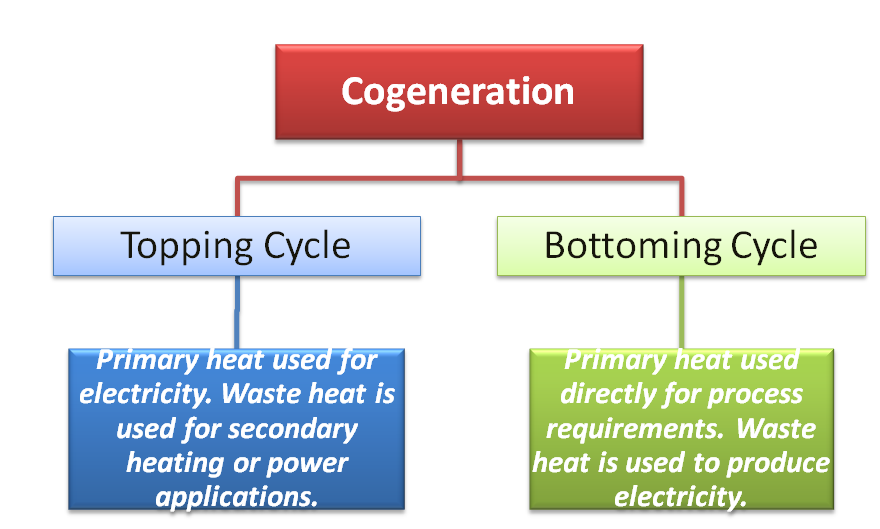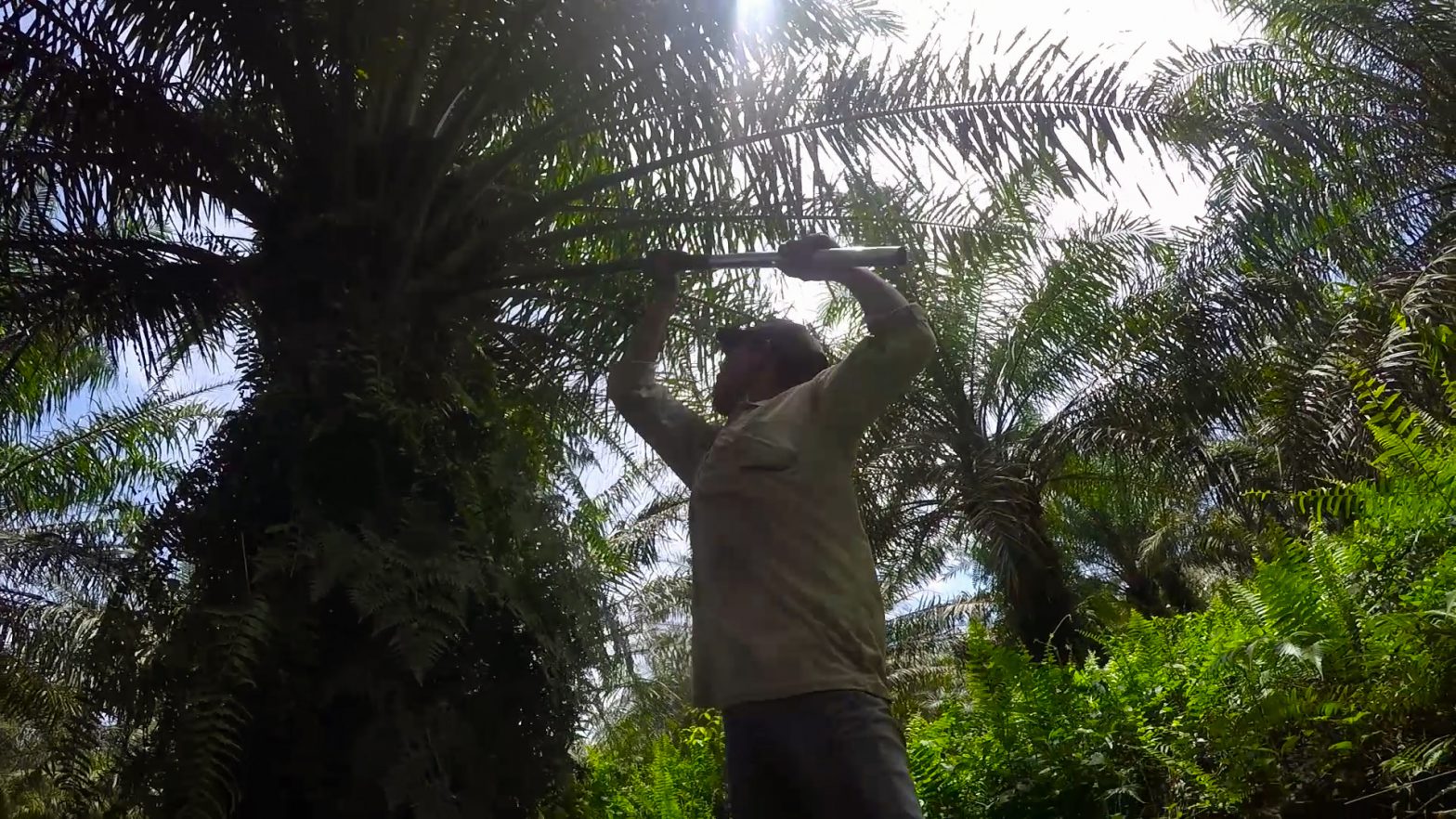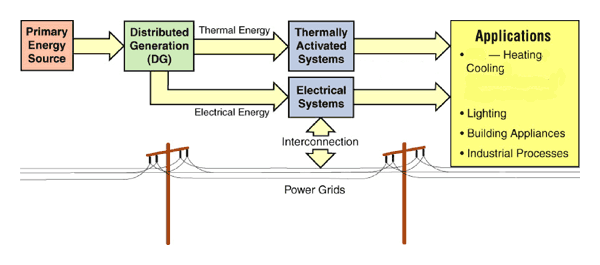Malaysia’s Policies on Renewable Energy and Global Warming that Went Awry
The Fifth-Fuel Policy under the Eight Malaysia Plan (2001- 2005) identified renewable energy sources as the fifth-fuel to be included into the national energy mix and more specifically, biomass residue from the palm oil mills as a major renewable energy resource. The policy pushed for optimising the use of renewable energy resources as a way to achieve maximum reduction of carbon emissions in the atmosphere. The fifth-fuel policy delved further to encourage co-generation as a suitable method to extract electricity and usable heat from biomass resources, mainly for in-house consumption. In this respect, the implementation of the policy faulted on two accounts:
- Firstly, by narrowly interpreting the policy direction as renewable for electricity generation the other important aspect, i.e. the simultaneous production of usable heat for in-house use was disregarded; and
- As a result of (1) above, standalone biomass-based power plants incinerating empty fruit bunches (EFB) remains from palm oil mills were promoted. This led to the second neglect, namely, prime biomass resource in the palm oil mills, which comprises mesocarp fibre and palm kernel shell that has tremendous renewable energy potential. The neglect of this prime biomass resource continues till today resulting in leaving their inherent renewable energy potential largely underutilised.
A downside to the two neglects mentioned above is that the standalone-small-scale-low-efficiency-electricity-only power plants burning empty fruit bunches, as forecast, demonstrated to be financially not viable and this unattractive economics continues to hamper biomass renewable energy development in Malaysia till today.
Global warming is widely recognised as the greatest challenge we face today. While there may be many causes, one major cause is attributable to current energy systems. This is because energy systems have been releasing carbon into the atmosphere – carbon which has been stored underground by nature in the form of fossil fuel. The end result of this over a long period of time has led to increasing levels of carbon dioxide (CO2) concentration in the atmosphere. Today, carbon dioxide is being considered as the greatest source of air pollution. And in this scenario, the use of renewable energy sources in place of fossil fuels in the energy systems is seen as a vital key to reduce carbon dioxide emissions.
Carbon dioxide increase in the atmosphere is largely attributable to the burning of fossil fuels such as coal, oil and gas, while the other significant contributor is deforestation. In view of this, reducing the anthropogenic (man-made) carbon dioxide emissions has been adopted as the top front-line strategy in the struggle to save the Earth from potentially catastrophic changes in climate caused by a change in the composition of the atmosphere.
Renewable energy comes primarily from renewable resources, which are quickly replaced naturally without an impact on the environment. Renewable energy sources can contribute to economic development, to energy access, and to a secure and sustainable energy supply, as well as reducing the negative impacts of energy provision on the environment. But since renewable energy resources are limited and precious, it is imperative that its utilisation be optimised for maximum carbon dioxide emission reduction.
As far as Malaysia is concerned, the environmental hazards posed by the energy systems and the continuing depletion of fossil fuels were recognised by the Malaysian government way back in the Eighth Malaysia Plan (2001-2005). The need to transform the energy systems was introduced under the Plan as the Five-Fuel Diversification Policy (or in short the Fifth-Fuel Policy). Renewable energy sources were established as the Fifth Fuel to be included into the national energy mix, by identifying biomass, biogas, municipal waste, solar and mini-hydro as additional sources of energy to supplement the conventional energy sources comprised of oil, gas, coal and large hydro.
 This Policy especially envisaged that biomass resources, such as oil palm wastes and wood residues as well as rice husks, should be used on a wider basis for the purpose of heat and electricity generation. Even then the Government had identified oil palm biomass wastes as the biggest resource that can be easily developed, and as having the greatest potential for bringing renewable energy into the mainstream energy supply.
This Policy especially envisaged that biomass resources, such as oil palm wastes and wood residues as well as rice husks, should be used on a wider basis for the purpose of heat and electricity generation. Even then the Government had identified oil palm biomass wastes as the biggest resource that can be easily developed, and as having the greatest potential for bringing renewable energy into the mainstream energy supply.
The Fifth-Fuel Policy states the following:
Biomass-based co-generation system for the production of electricity and usable heat energy will be encouraged. In this respect, the generation of energy mainly for in-house consumption will be promoted. The supply of excess energy generated by the biomass-based generating system to the local community and to the grid will be considered, depending on its technical and commercial viability.
The 8thMalaysia Plan went further to define a policy vision for distributed generation where cogeneration is indeed viable for the economy using renewable energy resources. The policy was to promote distributed generation, also called on-site generation, and where energy is harnessed from biomass resources, through energy efficient cogeneration process at the point of consumption, in particular from oil palm biomass wastes. Cogeneration – or Combined Heat and Power (CHP) as it is also known – is the process of generating power (usually electricity) and usable heat simultaneously from an initial heat source enabling significantly higher energy efficiency of a given site to deliver maximum carbon dioxide emissions saving.
The energy goals of the 8th Malaysia Plan further included a safe, cost-effective, secure energy supply which meant promoting renewable sources of energy, cogeneration energy systems, diversification of fuel sources, energy efficiency and using auditing, financial and fiscal incentives, technology development, and labelling.
Unfortunately, despite seemingly rigorous initiatives to develop renewable energy, the Government’s nobel goals were not achieved. This is especially regrettable since Malaysia has abundant biomass resources of renewable energy and more could have been achieved.
Obstacles to Greater Utilisation of Renewable Energy
No doubt with the Government’s support, there has been some development of RE in the country. But this development was impeded when some of the implementing bodies, namely the Ministry of Energy and the Energy Commission of Malaysia in consultation with their local Chief Technical Advisors, opted to take a narrow view of the Fifth-Fuel Policy. Fifth Fuel inclusion in the national energy mix was erroneously interpreted by them as renewable for electricity generation while neglecting another important aspect, i.e. the simultaneous production of usable heat in cases of biomass resources. It failed to highlight that the policy direction of cogeneration of energy from biomass resources was intended mainly for in-house consumption. This oversight by the implementing bodies hampered biomass renewable energy development in Malaysia and it sadly continues till today.
The policy clearly specified renewable energy exploitation in all sectors of the economy, namely, industrial, transport, commercial and residential and electricity generation. This implied that renewable heat energy supply in industry, commercial and residential sectors, and renewable fuel for internal combustion engine for transportation is part of the strategy apart from energy diversification for electricity generation. Further, the policy pushed for optimising the use of renewable energy resources as a way to achieve maximum reduction of carbon emissions in the atmosphere.
Several renewable energy resources were identified in the Fifth Fuel Policy. Of these, solar and mini-hydro potentials have several advantages in that they are able to be converted directly to electricity. Solar energy can be also converted to heat. In comparison, biomass, biogas and municipal solid waste need to be combusted before it can release its energy as a primary heat source initially, which can be further converted into electricity. However, the conversion process of heat to power is an inefficient and incomplete process limited by science, and therefore to obtain the maximum energy potential of biofuels one has to strive to use the residual heat after power generation for useful purposes, and this is where cogeneration comes in if we aim to further substitute and displace fossil fuels.
 The idea is that any initiative concerning the conversion of biomass renewable energy solely into electro-mechanical power generation without being accompanied by a use for the balance of the emerging residual heat energy must be discouraged. Residual heat is a by-product of energy conversion processes, and in such systems it is mostly discarded in cooling towers, the atmosphere, or discharged into the sea. Recovering value from residual heat presents valuable opportunities to lower energy costs, increase the productivity of energy, as well as reduce carbon dioxide emissions. Noting that biomass is a scarce renewable energy resource, the focus should shift to not only producing power but also to reuse as much of the residual heat energy, which is considered carbon-neutral, for other in-house heating needs.
The idea is that any initiative concerning the conversion of biomass renewable energy solely into electro-mechanical power generation without being accompanied by a use for the balance of the emerging residual heat energy must be discouraged. Residual heat is a by-product of energy conversion processes, and in such systems it is mostly discarded in cooling towers, the atmosphere, or discharged into the sea. Recovering value from residual heat presents valuable opportunities to lower energy costs, increase the productivity of energy, as well as reduce carbon dioxide emissions. Noting that biomass is a scarce renewable energy resource, the focus should shift to not only producing power but also to reuse as much of the residual heat energy, which is considered carbon-neutral, for other in-house heating needs.
In respect of these characteristics, the Fifth Fuel policy rightly pointed out that biomass fuels should be used for in-house energy generation by way of co-generation system for the production of electricity and usable heat energy mainly for self-consumption.
Further, another important fact to consider is that power generated from biomass can offer baseload support to the grid with high load reliability. Therefore it merits playing a cornerstone role in meeting renewable energy targets. In this respect, biomass power is far superior to the solar PV power in that it does not suffer problems of intermittency associated with solar PV power.
Biomass combustion represents a near-term, low-risk, rapidly deployable, sustainable, and highly scalable renewable energy option. Unlike other alternatives, no breakthroughs are needed.
Biomass Fired Power Plants
In power plants of industrial capacity, the efficiency of conversion from heat input to electricity is typically between 15% and 18 % as compared with utility power stations, where the efficiency can go up as high as 40 %. Industrial scale biomass power plants therefore offer correspondingly low carbon emissions savings and in some cases the emissions savings of a given biomass source can be even negative when carbon emissions from transporting biomass supplies from long distances are considered. Further, biomass power plants envisaged for generating only power are usually not financially viable at industrial scale capacities, unless the subsidies for the power are high.
Therefore, in special cases, where biomass is constrained to be utilised for power generation without use of its associated residual heat, as an optimisation, the biomass can be beneficially co-fired in a nearby utility power plant and making possible electricity obtained from it at a higher efficiency. Where cogeneration is not viable another alternative for utilisation of biomass for carbon emissions saving, albeit less efficient, would be to utilise all of the heat of combustion of the biomass solely for heating purposes. Unfortunately there is no subsidy to encourage this manner of using renewable energy.
In good faith, the UNDP/GEF Biogen project initiated by the Government was meant to be a model energy-efficient demonstration “Biomass-Based Combined Heat and Power energy system in a Palm Oil Mill” as a replacement alternative for existing low efficiency systems at mills. The project objective was to develop a high efficiency energy system for a palm oil mill to productively / economically utilise the renewable energy potential of the prime biomass residues of the mill to enable export of surplus energy to the utility electricity grid. In this regard, empty fruit bunch remains at palm oil mills was to be included as a supplementary fuel, if need be, for the co-generation plant capacity optimisation. Instead sadly the project culminated in a standalone empty fruit bunch incineration plant known as the MHES Asia Biomass Power plant in Negeri Sembilan. It became a white elephant, unable to fulfil its mission of providing an energy-efficient cogeneration system of a palm oil mill in furtherance of the renewable energy objectives of the Fifth Fuel Policy. The project concept and terms of reference for the project implementation were drawn up in line with the RE policy vision by UNDP/GEF with the help of international experts, but the local follow-up implementation went wrong.
It appears that the Ministry of Energy and the Energy Commission of Malaysia overlooked the special characteristic of energy conversion from biofuels in promoting biomass as a renewable energy. It encouraged the setting up of stand-alone power generating plants which in their endeavour to duplicate the utility power plants heavily promoted the burning of oil palm empty fruit bunches (EFB). The carbon emissions saving potential of these plants is low, when we take into consideration the large carbon emissions associated with the transportation of moisture laden EFB. Most of such standalone biomass power plants promoted for electricity generation have since shut down and been discontinued soon after “commissioning” for reasons of uneconomic operation. “Commissioning” is a pre-requirement for last draw-down of loans by the enterprise from the banks.
An example of a poor choice investment appears to be the empty fruit bunch incineration plant known as the FTJ Biopower in Jengka which can be expected to have meagre carbon emissions savings outcome. This is a major joint venture undertaking between Felda (FGV) and our national energy corporation Tenaga National Berhad. These and similar power plants do not seem to provide much carbon dioxide emissions saving as originally envisaged. In addition to the woe of low carbon emissions savings, these white elephants are unable to sustain themselves without high government subsidies.
In promoting the stand-alone power plants burning oil palm empty fruit bunches, the implementing agencies have overlooked the prime biomass resource in the palm oil mills, comprising mesocarp fibre, palm kernel shell and biogas that has tremendous renewable energy potential, but yet to be fully realised till today. A typical 60 tonnes/hour capacity palm oil mill produces prime biomass residue streams that can release 50 MW of primary renewable heat supply. This second oversight by the implementing agencies has led to the loss of a great opportunity for biomass renewable energy development in the country.
The palm oil industry is crying out for help to reduce its carbon footprint! It is hoping and praying that renewable energy agencies will do right (hopefully) soon.
These failures to harness the abundant renewable energy potentials of the biomass resources should not be attributed to technical limitations or indifference in the attitude of the industry or enterprises. It has to do with the capacity and competence to understand and appreciate the limitations of each resource of renewable energy and a glaring lack of knowledgeable leadership in this area. Effective policies and appropriate incentives on renewable energy (RE) are critical to promote a low carbon economy and society in the future.
One would have hoped that visits by members of the implementing agencies to Nordic and European countries would have helped them to better understand and appreciate government policy directions on renewable energy development.
The latest National Renewable Energy Policy and Action Plan (2010) did little to promote and intensify the renewable energy initiative of the government. It set a misguiding roadmap for renewable energy development seeing only electricity as energy! Attention is not focused on recovery of usable heat as an important sustainable energy for industrial, commercial and residential applications. Efficiency of renewable energy resource utilisation did not feature significantly anywhere in this Policy and Plan.
Sustainable Energy Development Authority (SEDA)
SEDA is a statutory body formed under the Sustainable Energy Development Authority Act 2011 to develop sustainable energy. The Act defines “sustainable energy” as energy which, in its generation, provision and use, is such that it meets the needs of the present without compromising the ability of future generations to meet their needs, and includes renewable energy. “Renewable energy” is defined as electricity generated or produced from renewable resources.
The authority’s functions are set out in the Act, the primary function being to promote, stimulate, facilitate and develop sustainable energy. Sustainable energy was envisaged by the Parliament as all-inclusive energy and is supposed to take into account, usable heat energy for industrial, commercial and residential use, transportation fuels and electricity that supports sustainability.
With the scant information that is revealed to public, SEDA in the three years since its inception appears to be over focussed on feed-in-tariff and solar photovoltaic installations. Nothing much seems to have commenced on its primary function of promoting, stimulating, facilitating and developing sustainable energy.
Feed-in-tariff at best, should be temporary and anyway, is only one of a myriad of initiatives to promote sustainable energy. There seem to be some kind of constraint at SEDA. One wonders whether the current legacy is due to the narrow approach adopted by the National Renewable Energy Policy and Action Plan as regards sustainable energy? Or is it the convenience of putting up solar panels on roof-tops and connecting wires? Or is it its quality of leadership? SEDA has taken up the baton and needs to step up to the plate. An organisation’s quality of leadership should commensurate with the importance of its function. Climate change is ‘an immediate and growing threat.’
SEDA has publicly stated that its key role is to administer and manage the implementation of the feed-in tariff mechanism. But, this should only be a subsidiary function of SEDA as envisaged by the Act of Parliament.
At this point, SEDA should be concerned about the dearth of new development of biomass or biogas power plants utilising biomass in the palm oil industry, alongside announcing new quotas for solar PV and additional levy on consumers to sustain solar PV installations. A lot more concerted effort is necessary to realign the SEDA’s goals and objectives with its actions.
The most important thing about global warming is this. Whether humans are responsible for the bulk of climate change is going to be left to the scientists, but it’s all of our responsibility to leave this planet in better shape for the future generations than we found it.



One reply on “National Policies on Renewable Energy Utilisation and Abatement of Global Warming”
global warming is such a big issue right now